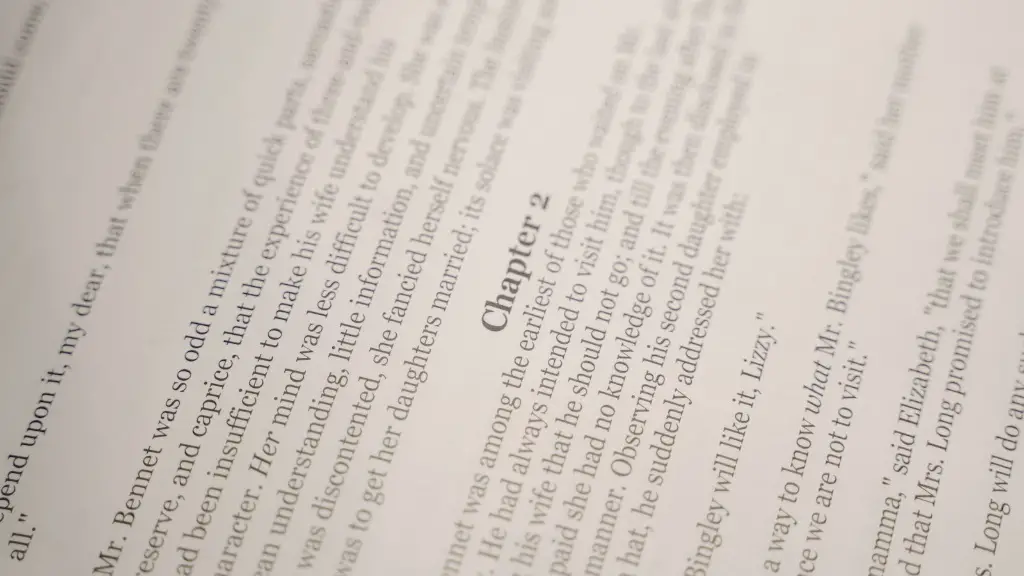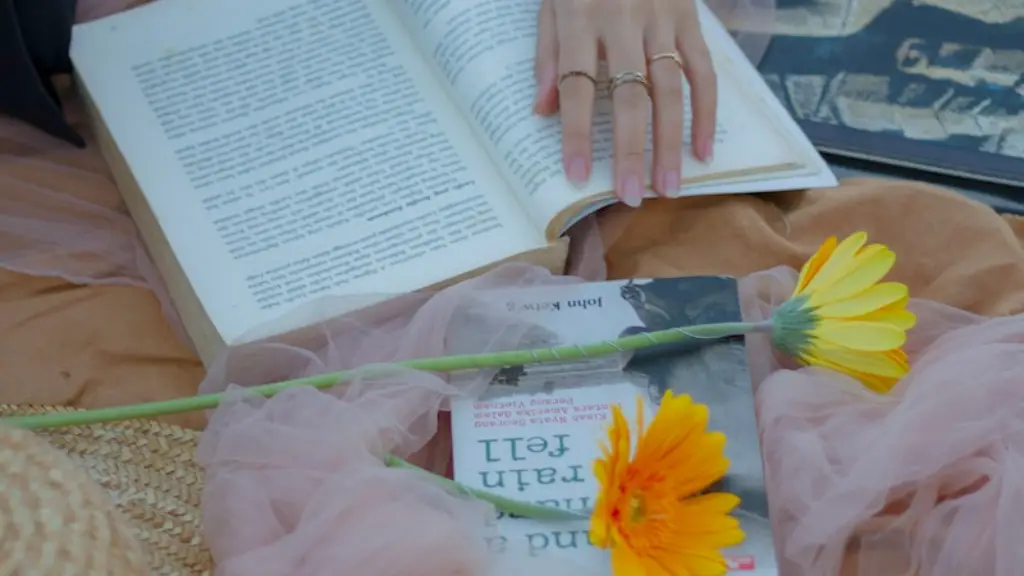Poetry is a genre of literature that has been around for centuries. It is often seen as one of the oldest forms of literature, and is believed to have originated in ancient cultures. Poetry is a form of writing that expresses ideas and feelings through the use of creative language, imagery, and sound. It can evoke emotion, create pictures in the reader’s mind, and often has a moral, or a lesson that can be taken away. Poetry can take many forms, including narrative and lyrical. Some of the most famous examples of poetry have been written by some of the most well-known poets, such as William Wordsworth, Robert Frost, and Emily Dickinson.
One of the most common examples of narrative poetry is the epic poem. Epic poems, such as Homer’s Odyssey, Virgil’s Aeneid, or the Indian’s Mahabharata, are long and elaborate accounts of a series of heroic or magical events. Many epics also tell a particular story or moral, often a lesson about courage or morality. This type of poetry is often celebrated by culture, and some epics are even used to define a nation or a people. Another type of narrative poem is the ballad, which is often used to tell a story of romance or adventure, and has been popular in folk music and storytelling throughout history.
Lyrical poetry is a type of poetry that focuses more on expressing personal emotion and feelings. This type of poetry often follows the form of a song or a chant, and can take on a wide array of topics, from love and loss to tragedy and joy. One of the first forms of lyrical poetry is the sonnet, which is a fourteen-line poem written in iambic pentameter, with a consistent rhyme scheme. This form of poetry was popularized in the Renaissance period by William Shakespeare, who wrote 154 sonnets that continue to be read and analyzed today. Other forms of lyrical poetry include odes, hymns, and villanelles.
In addition to these two main types of poetry, there are a variety of hybrid forms that combine both lyrical and narrative elements. Examples of hybrid poetry can take the form of a haiku, which is a three-line poem that uses a concise structure to express intense emotion, or they can be a hybrid of story-telling and song, such as the musical theatre piece “Leonard Bernstein’s West Side Story.” Each of these examples of poetry use language in different ways and can evoke different emotions from the reader.
Metaphor and Symbolism
When it comes to understanding poetry, the use of metaphor and symbolism plays an important role. Metaphors are implications or associations used to help readers relate new information to something that is already familiar or understood. For example, William Shakespeare’s famous line “all the world’s a stage” could be interpreted as a metaphor for life itself, where different people play different roles within society. Symbolism is often used in poetry to give voices to abstract concepts or ideas. This could be used to express something as complex as love, or as simple as a colour.
Form and Structure
The form and structure of a poem is also an important element to consider when analyzing a poem. Often, the structure of a poem will coincide with the meaning of the poem. For example, when reading a free-verse poem, readers should pay attention to the punctuation and line breaks, as these may help to convey the intended meaning. Alternatively, rhyme and meter can help indicate the emotion of a poem. The rhyme scheme can help to create a feeling of longing or conclude a poem with a sense of finality. Likewise, meter often helps to create a rhythm and set a mood for the reader.
Imagery and Sensory Detail
The use of imagery in poetry can also help to set the tone and enhance the poet’s meaning. Imagery is often used to evoke a desired emotion in the reader. This could be done through the use of colours, animals, weather, or anything else that can provide the reader with a visual connection to the poem. Similarly, sensory detail can help to heighten the emotion of the poem by adding texture and depth to a scene. For example, a poem about a sunset could include descriptions of warm air or the smell of the ocean.
Rhetorical Devices
Rhetorical devices can help a poet to make their message more direct and powerful. These devices, such as assonance, alliteration, hyperbole, and irony, can help to emphasize certain words or images and draw in the reader. By employing rhetorical devices, a poet can give their poem a more personal meaning and create an even stronger connection between the poem and its intended audience.
Figurative Language
The use of figurative language in poetry is often seen as the poet’s way of expressing feelings, thoughts, and ideas that often go beyond the literal meaning of words. This could take the form of similes, metaphors, or personification, and can often give voice to difficult concepts or abstract emotions. For example, a poet may use the metaphor of a rose to represent the beauty of love, or personification to give life to an inanimate object. This allows the reader to interpret the poem in a way that is meaningful to them, and helps the poem to become more emotionally resonant.
Themes and Messages
The themes and messages of a poem can also be important when analyzing a work of poetry. Often, poems will have clear messages or themes that can convey an understanding of the poet’s struggles, joys, sorrows, or passions. This understanding can be reached either through explicative or implicit messages. Explicative messages are often found in a poem’s obvious imagery and wording, while implicit messages are often conveyed through hidden meanings. By understanding these messages and themes, readers can connect to a poem in a more meaningful way.
Emotionally Charged Language
Finally, the power of poetic language comes from its ability to evoke emotions from its readers. Poetry often relies on emotionally charged language to drive the narrative. This language is used to create a sense of nostalgia, joy, or sorrow, and can often help to move the reader to a particular reaction. By using strong language that evokes strong emotion, poets can create poems that are powerful and deeply meaningful.


